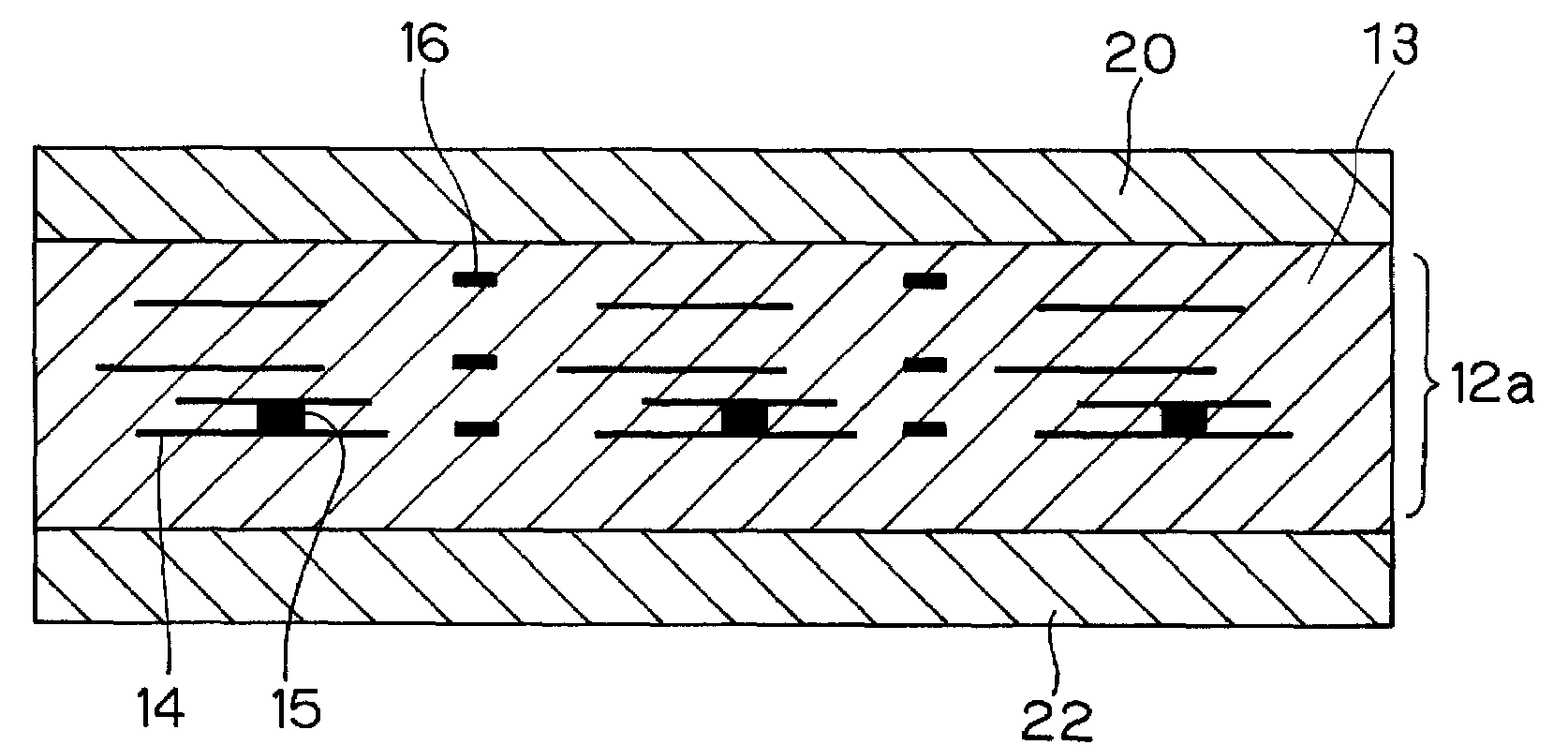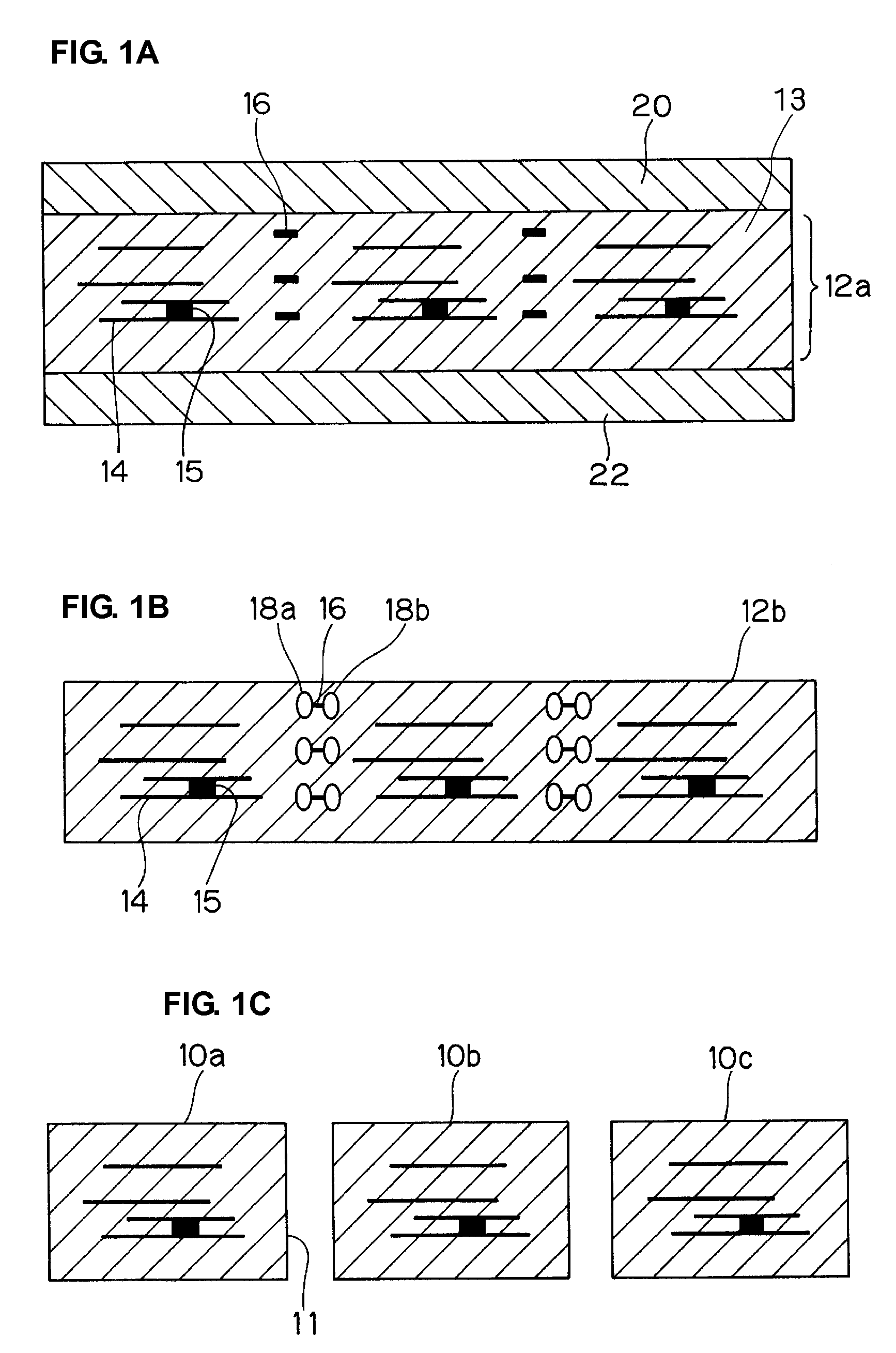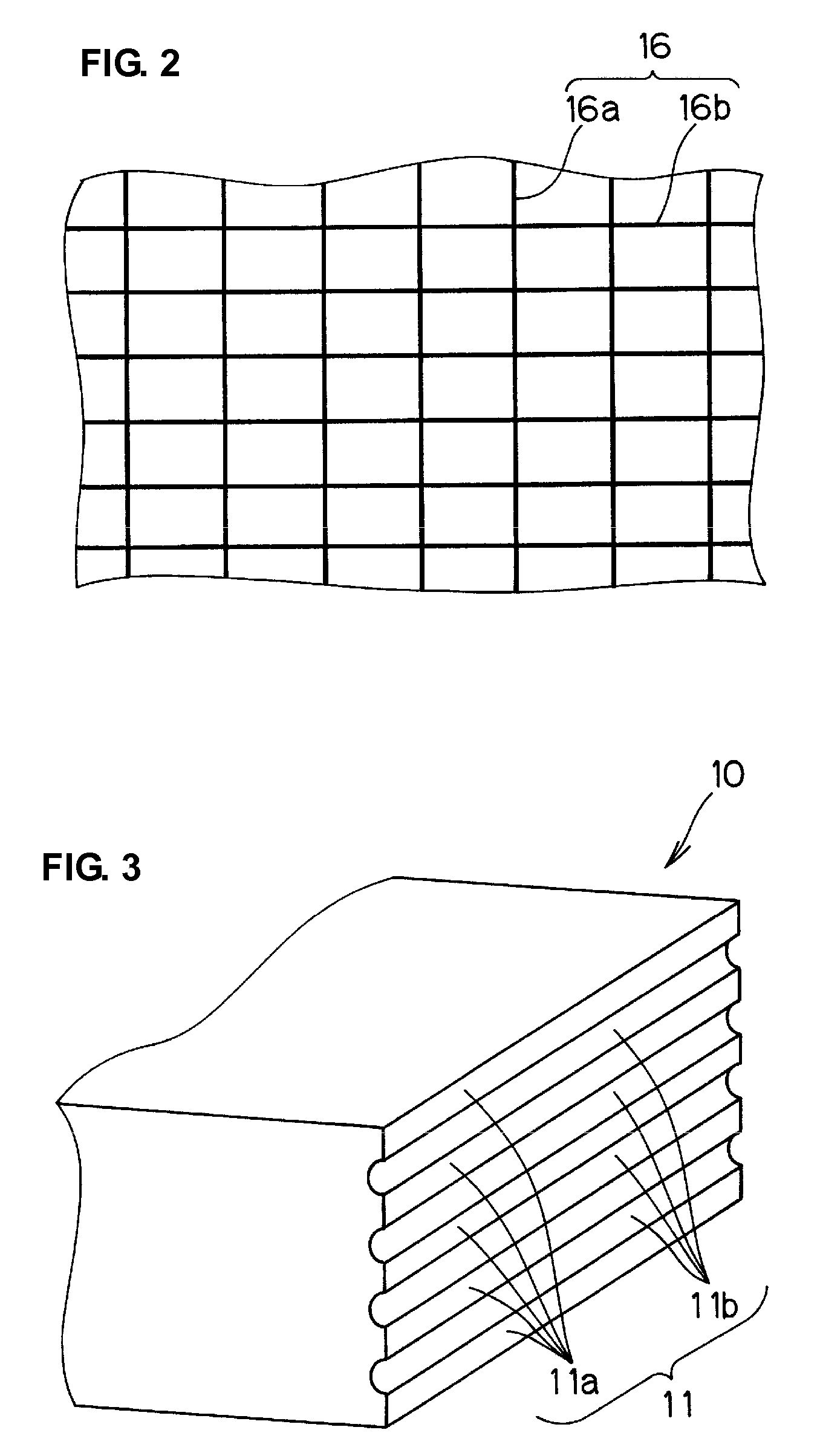Method for producing multilayer ceramic substrate
a multi-layer ceramic and substrate technology, applied in the direction of water-setting substance layered product, transportation and packaging, chemistry apparatus and processes, etc., can solve the problems of large-scale cosub>2 /sub>laser irradiation apparatus, substrate breakage, and high cost, so as to achieve accurate and easy production of multi-layer ceramic substrates
- Summary
- Abstract
- Description
- Claims
- Application Information
AI Technical Summary
Benefits of technology
Problems solved by technology
Method used
Image
Examples
first preferred embodiment
[0042]A method for producing a multilayer ceramic substrate according to a first preferred embodiment will be described below with reference to FIGS. 1A to 4.
[0043]A brief outline of the method for producing a multilayer ceramic substrate will be described below with reference to FIGS. 1A to 1C which are cross-sectional views.
[0044]As shown in FIG. 1A, shrinkage inhibiting green sheets 20 and 22 in close contact with both surfaces of a green ceramic laminate 12a including portions to be formed into a plurality of multilayer ceramic substrates are fired.
[0045]The green ceramic laminate 12a includes in-plane conductive patterns 14 to be formed into internal electrodes, internal leads, embedded elements, and other circuit components in the multilayer ceramic substrates, the in-plane conductive patterns 14 being arranged between a plurality of stacked ceramic green sheets 13; and boundary-defining conductive patterns 16 arranged along boundaries between the multilayer ceramic substrates...
second preferred embodiment
[0082]The ceramic laminate is separated at an edge through one of the cavities formed at both edges of each boundary-defining conductive pattern. To form the edge more accurately, as shown in FIG. 5, the locations and widths of the boundary-defining conductive patterns 16p, 16q, 16r, and 16s may be changed such that sides 17p, 17q, 17r, and 17s of individual boundary-defining conductive patterns 16p, 16q, 16r, and 16s are aligned along the boundaries of the multilayer ceramic substrates. Thereby, the ceramic laminate after firing can be separated at edge 11s passing through the cavities 18 formed at the sides 17p, 17q, 17r, and 17s aligned in the stacking direction of the boundary-defining conductive patterns 16p, 16q, 16r, and 16s.
[0083]The boundary-defining conductive patterns may also be arranged on both sides of the break edge. Alternatively, the boundary-defining conductive patterns may overlap the in-plane conductive patterns.
third preferred embodiment
[0084]As shown in FIG. 6, boundary-defining conductive pattern segments 16s and 16t may be discontinuously formed.
PUM
| Property | Measurement | Unit |
|---|---|---|
| softening point | aaaaa | aaaaa |
| viscosity | aaaaa | aaaaa |
| particle size | aaaaa | aaaaa |
Abstract
Description
Claims
Application Information
 Login to View More
Login to View More - R&D
- Intellectual Property
- Life Sciences
- Materials
- Tech Scout
- Unparalleled Data Quality
- Higher Quality Content
- 60% Fewer Hallucinations
Browse by: Latest US Patents, China's latest patents, Technical Efficacy Thesaurus, Application Domain, Technology Topic, Popular Technical Reports.
© 2025 PatSnap. All rights reserved.Legal|Privacy policy|Modern Slavery Act Transparency Statement|Sitemap|About US| Contact US: help@patsnap.com



